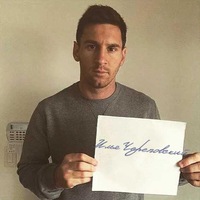
ПОМОГИТЕ ПОЖАЛУЙСТА, СРОЧНО!!! Вычислите заряд следующих комплексных ионов, образованных хромом
(III): [Cr(H2O)5CI]?, [Cr(H2O)4CI2]?, [Cr(H2O)3CI3]? и назовите эти комплексные ионы. 0
0
 0
0
Ответы на вопрос
 Внимание! Ответы на вопросы дают живые люди. Они могут содержать ошибочную информацию, заблуждения, а также ответы могут быть сгенерированы нейросетями. Будьте внимательны. Если вы уверены, что ответ неверный, нажмите кнопку "Пожаловаться" под ответом.
Внимание! Ответы на вопросы дают живые люди. Они могут содержать ошибочную информацию, заблуждения, а также ответы могут быть сгенерированы нейросетями. Будьте внимательны. Если вы уверены, что ответ неверный, нажмите кнопку "Пожаловаться" под ответом.

Объяснение:
Решение:
Заряд комплексного иона равен сумме зарядов комплексообразователя и лигандов, поэтому заряды комплексных ионов будут равны:
а) [Cr3+ (H2O0)6]3+;
3+ 6*0 = +3
b) [Cr (H2O)5 Cl]2+
+3 + 5*0 + (-1) = +2
c) [Cr (H2O)4 Cl2]+1
+3 + 4*0 + 2*(-1) = +1
для других комплексных ионов производим аналогичные расчеты и получаем:
d) [Cr (CN -1)6]1-
e) [Cr(NH3)4 (H2O)2]3+
f) [Cr (NH3)5 NO2]1+
 0
0
 0
0

Calculation of Charges for Complex Ions Formed by Chromium (III)
To calculate the charges for the complex ions formed by chromium (III), we need to consider the oxidation state of chromium and the charges of the ligands (in this case, water and chloride ions).
The oxidation state of chromium (III) is +3, which means that chromium has lost three electrons. Each water molecule (H2O) has a neutral charge, and each chloride ion (CI-) has a charge of -1.
Let's calculate the charges for each complex ion:
1. [Cr(H2O)5CI]: - Chromium (III) has a charge of +3. - There are five water molecules, each with a neutral charge. - There is one chloride ion with a charge of -1. - The total charge is +3 + (5 * 0) + (-1) = +2. - Therefore, the charge of the complex ion [Cr(H2O)5CI] is +2.
2. [Cr(H2O)4CI2]: - Chromium (III) has a charge of +3. - There are four water molecules, each with a neutral charge. - There are two chloride ions, each with a charge of -1. - The total charge is +3 + (4 * 0) + (2 * -1) = +1. - Therefore, the charge of the complex ion [Cr(H2O)4CI2] is +1.
3. [Cr(H2O)3CI3]: - Chromium (III) has a charge of +3. - There are three water molecules, each with a neutral charge. - There are three chloride ions, each with a charge of -1. - The total charge is +3 + (3 * 0) + (3 * -1) = 0. - Therefore, the charge of the complex ion [Cr(H2O)3CI3] is 0.
Naming the Complex Ions
The naming of complex ions follows a specific pattern. In general, the name of a complex ion consists of the name of the central metal ion (in this case, chromium) followed by the names of the ligands in alphabetical order, along with their respective prefixes to indicate the number of ligands.
1. [Cr(H2O)5CI]: - The complex ion [Cr(H2O)5CI] has a charge of +2. - The name of the complex ion is pentaamminechlorochromium(III).
2. [Cr(H2O)4CI2]: - The complex ion [Cr(H2O)4CI2] has a charge of +1. - The name of the complex ion is tetraamminedichlorochromium(III).
3. [Cr(H2O)3CI3]: - The complex ion [Cr(H2O)3CI3] has a charge of 0. - The name of the complex ion is triamminetrichlorochromium(III).
Please note that the names of complex ions may vary depending on the specific nomenclature rules used. The names provided here are based on the IUPAC nomenclature system.
I hope this helps! Let me know if you have any further questions.
 0
0
 0
0
Похожие вопросы
Топ вопросов за вчера в категории Химия
Последние заданные вопросы в категории Химия
-
Математика
-
Литература
-
Алгебра
-
Русский язык
-
Геометрия
-
Английский язык
-
Химия
-
Физика
-
Биология
-
Другие предметы
-
История
-
Обществознание
-
Окружающий мир
-
География
-
Українська мова
-
Информатика
-
Українська література
-
Қазақ тiлi
-
Экономика
-
Музыка
-
Право
-
Беларуская мова
-
Французский язык
-
Немецкий язык
-
МХК
-
ОБЖ
-
Психология
-
Физкультура и спорт
-
Астрономия
-
Кыргыз тили
-
Оʻzbek tili


























